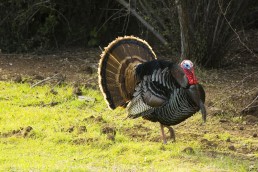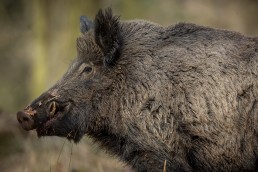MoNews
SHARE THIS POST
Young hunters check nearly 3,000 deer during late youth portion
Preliminary data from the Missouri Department of Conservation (MDC) shows that young deer hunters aged 6 through 15 checked 2,944 deer during Missouri’s late youth portion of the deer hunting season last November. Of the 2,944 harvested, 1,149 were antlered bucks, 426 were button bucks and 1,369 were does. Top harvest counties were Pike with 70 deer checked, Howell with 55 and Lincoln and Osage with 52 each.
Last year’s late youth portion harvest total was 2,353, with 664 antlered bucks, 376 button bucks and 1,313 does.For current, preliminary harvest totals by season, county and type of deer, visit the MDC website. For harvest summaries from past years, visit huntfish.mdc.mo.gov.
Missouri offers some of the best deer hunting in the country. Deer hunting is an important part of many Missourians’ lives and family traditions, and is also an important economic driver in the state, contributing $1 billion annually to boost state and local economies.
Montauk and Bennett Spring state parks to receive $7.6 million in upgrades
Completed and ongoing projects at Montauk and Bennett Spring state parks totaling $7.6 million are part of the ongoing $69 million in upgrades throughout Missouri’s state parks system since 2009.
An additional $10 million in improvements to Missouri’s state parks and historic sites is being funded through a strategic bond issuance.
“For generations, Bennett Spring and Montauk state parks have been renowned destinations for fantastic fishing and outdoor fun, and Missourians expect and deserve that we keep them in top shape,” said Bill Bryan, Missouri State Parks director.
In 2015, Missouri State Parks posted record attendance with 19.2 million guests, representing a 30 percent increase since 2008. Through July 2016, attendance increased by more than 1 million visitors from the same period in 2015.
Missouri has expanded and improved its nationally recognized state park system with a new state park under development in Jefferson County and the Rock Island Trail State Park, a 47.5-mile-long extension that will allow hikers and bicyclists greater access from the Kansas City region to the 240-mile Katy Trail scheduled for completion later this year.
State parks and historic sites contribute to a healthy economy. Results of an economic impact study released in 2012 estimated that annual expenditures of state park visitors totaled approximately $778 million. The overall economic impact of these expenditures is estimated at $1.02 billion in sales and support more than 14,000 jobs.
For information about Missouri’s state parks and historic sites, visit mostateparks.com.
National Bobwhite Conservation Initiative (NBCI) releases online tool for habitat restoration
The National Bobwhite Conservation Initiative (NBCI) has taken another significant step in the recovery of native vegetation and habitats in Missouri and 24 other NBCI states with the release of NatiVeg, an online decision-making tool.
“With restoration of native grasses, wildflowers and shrubs across the landscape being a critical means to the recovery of bobwhite, grassland birds and pollinator populations, NBCI’s NatiVeg will make it significantly easier for landowners and resource managers to select the right native plants for their specific location and specific purpose,” said Don McKenzie, NBCI director.
Are you enjoying this post?
You can be among the first to get the latest info on where to go, what to use and how to use it!
NatiVeg is a remote, online tool that works on desktops, laptops, tablets and smartphones. Developed by NBCI and University of Tennessee Institute of Agriculture Information Technology Service, and beta-tested by a variety of outside reviewers, NatiVeg is a database within the 25-state initiative’s range that delivers the proper native plant choices for a specific location and the user’s specific purposes, whether it’s wildlife, forage, biomass, pollinators or for critical-area planting, restoration or soil conservation. That location can be specified either manually or by a connected mobile device’s GPS. In addition, the provided recommendations discriminate, for instance, between a big bluestem grass adapted to Texas and one adapted to Alabama based on location.
“We encourage landowners and resource managers to check out this new tool,” McKenzie said, “to help improve their native grassland restoration efforts.”
He also asked for feedback from users to help NBCI continually improve the unique wildlife conservation service.
For questions and information, contact NBCI Grasslands Coordinator Jef Hodges at jhodge34@utk.edu or at 660-351-2766. Missourians can also contact David Hoover, Small Game coordinator, Missouri Department of Conservation at dave.hoover@mdc.mo.gov or at 573-522-4115, ext. 3154. Iowans can contact Todd Bogenschutz, Iowa DNR, at todd.bogenschutz@dnr.iowa.gov or 515-432-2823.
For more information visit bringbackbobwhites.org or find them on Facebook, YouTube, and SlideShare.
MDC assigns new private lands conservationist for Shannon County
In December, the MDC announced Cody Roberts as the new private lands conservationist for Shannon County. MDC’s private lands conservationists work with landowners to provide on-site technical assistance to improve wildlife and forest habitat.
“Cody is very familiar with Ozarks land management and the private landowners he will serve,” said Brad McKee, MDC’s Ozark Region private lands regional supervisor.
Roberts grew up on a farm in neighboring Oregon County. He worked for several area landowners doing various farm labor jobs and worked on wildlife habitat improvements for a non-resident landowner for several years. He received his bachelor of science in biology and earth science from William Penn University in Iowa and his masters of science in biology, geoscience, and GIS from Southeast Missouri State University in Cape Girardeau.
Since graduating in 2014, Roberts has worked for MDC’s Wildlife Division as a resource assistant and wildlife biologist assistant in the southwest region. He worked with grassland management activities, including prescribed fire, administering grazing, hay, crop and seed contracts, supervising crews on various quail projects and assisting hunters using public lands. Roberts also has several certifications and training, including Level 1-3 fire, herbicide application and management, equipment and safety trainings.
“This culmination of experience in conservation and habitat management gives Cody the tools he needs to conduct a successful private land program in Shannon County,” McKee said.
For information on how MDC works with landowners to improve habitat, go online to mdc.mo.gov. Shannon County landowners can reach Roberts at 573-226-3241, ext. 106, or by emailing at cody.roberts@mdc.mo.gov.
MWO
SHARE THIS POST
You may also like...
Did you enjoy this post?
You can be among the first to get the latest info on where to go, what to use and how to use it!
Darrell Taylor
Darrell Taylor has fished for more than 65 years. During the past 25 years, Taylor has generated more than 2,000 published articles, columns and fishing reports. His writings received 14 peer-level awards from outdoor writer organizations, including the Association of Great Lakes Outdoor Writers “Excellence in Craft” Golden Glow Award, their highest recognition.



